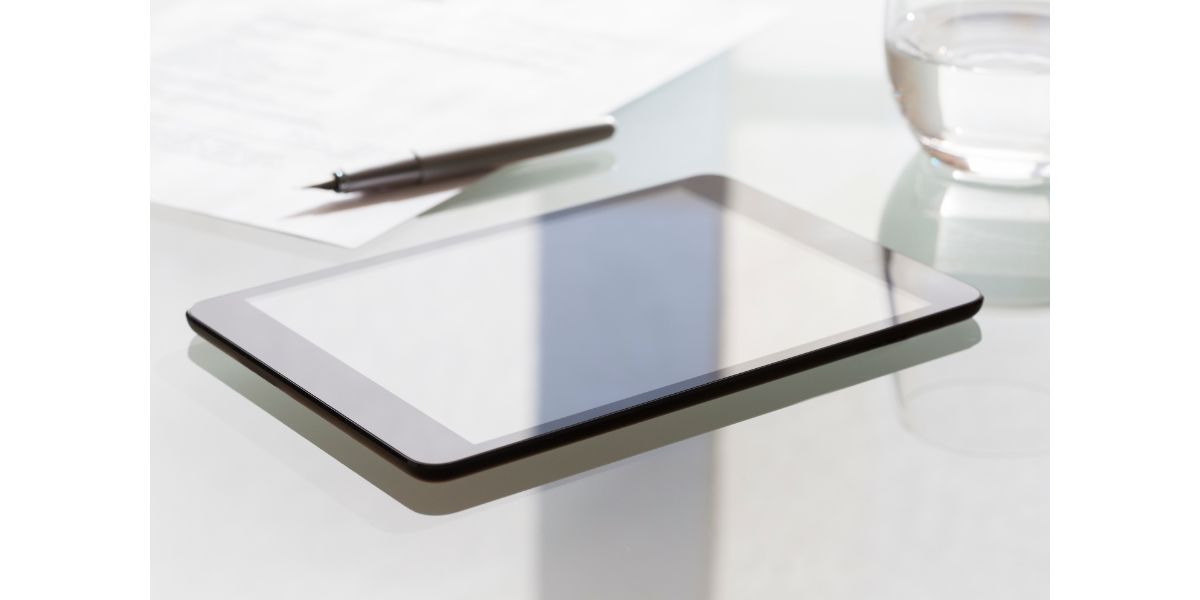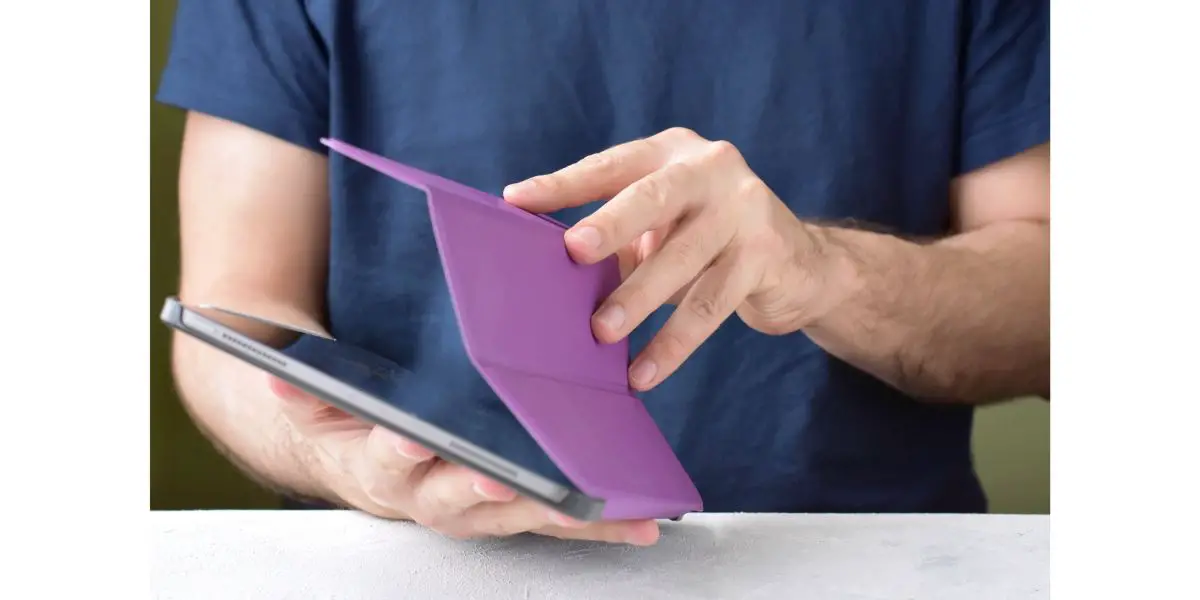Disclaimer: This post may contain affiliate links, meaning we get a small commission if you make a purchase through our links, at no cost to you. For more information, please visit our Disclaimer Page.
It is frustrating to try playing a game or watching YouTube on your tablet only for it to shut off.
In this article, we’ll explain why your tablet keeps turning off by itself and how you can fix the issue!
Table of Contents
Top 6 Reasons Why Your Tablet Is Turning Off By Itself
There are six common reasons why your tablet is turning off by itself:
- The screen timeout feature is set shorter than you want.
- The tablet is overheating.
- The device has a virus.
- You are using incompatible apps.
- Your power source is no longer functioning properly.
- Your software is either outdated or improperly installed.
Screen Timeout Feature
Most devices have a feature that will turn off your screen after a select time of inactivity. You can set the time for the screen timeout features on android tablets by following these steps:
- Head to settings and search for Screen timeout.
- Select Screen timeout.
- Choose the desired time limit you want for your screen to stay active.
The Tablet is Overheating
Overheating is one of the most common reasons your device could turn off. When a tablet is overworked, it heats up.
If a device is too hot to touch, even with a case, there’s a problem. Turn off the device immediately and try to remove the case.
Your Tablet Has a Virus
Malware does not announce its existence. However, it’s become an everyday concern that worries tablet users. You can catch malware from websites or third-party app stores.
Here are a few signs to look out for that may tell you whether your device has a virus or not:
- The tablet is overheating: The tablet’s internal hard drive works harder to keep up with malware, which results in the device being hot to the touch.
- Unwanted apps: Trojan hackers stay true to their name. When you get malware, a new app may appear on your tablet. The app will look mostly real. If you notice any new apps that look fishy, delete them.
- Battery drainage: Malware forces your tablet to drain its battery. Trying to support a virus leaves your system exhausted.
Because a virus attacks the hard drive, it affects the entire system. If you let a virus stay on your device undetected for too long, it will cause constant crashing, resulting in your tablet turning off by itself.
You Are Using Incompatible Apps
If you have noticed that your tablet turns off by itself after or while using a particular app, it is likely not compatible with your device.
For example, trying to operate a graphic-heavy game on an older, slower tablet will result in crashing because the operating system does not have the specs to keep up. Other times, an app may not have the qualifications to run with your operating system, which can cause your device to turn off.
Your tablet will shut off to protect itself if it doesn’t recognize the app’s software. This issue can happen if your tablet’s OS is old or your firmware is outdated. Newer apps will not work with the old firmware. That’s why many users upgrade to newer models often.
Memory shortages can also cause crashes. If you have an app on your tablet that utilizes significant memory, it may overwork your device. This problem also occurs when you have too many apps on your device.
The Power Source is Faulty
If your device stays off or will only turn on for a split second before turning it back off again, it’s likely an issue with your battery. It’s a fact that batteries will not last forever. Most tablets have a 2 to 3-year lifespan before they stop working.
Sometimes though, your device may have a faulty battery from the beginning or experience battery strain during use. Aside from general wear from time, batteries can start to die if you drop your device.
When your battery is faulty, it may say it’s at 100% power and then drop to 0% within minutes- maybe even seconds. Declining batteries also take longer to charge.
Software Issues
If your tablet is constantly turning itself off, it may be in a cycle of rebooting- also called boot looping. Boot looping can occur if an update does not work appropriately or you have malware.
Another common software issue is with old devices. Outdated firmware, old batteries, and more lead to the death of your tablet. Sadly, you cannot turn back the clock with devices. Software companies come out with new updates that make your older model obsolete. Eventually, it stops being able to keep up.
You can always attempt a factory reset, remove apps, and clear cache- but these are not guaranteed solutions for an older device. If you have had your tablet for several years, it may be time to purchase a replacement.
8 Fixes for When Your Tablet Turns Off By Itself
1. Start Your Tablet in “Safe Mode”
Safe mode allows you to troubleshoot whether the issue is with your software or a physical component. If you have a virus on your tablet, safe mode will give you access to use your software without issues from the bug.
Follow these steps to turn “Safe Mode” on with an Android tablet:
- Press and hold the Power button down. Hold it until the “Power” menu appears across the screen.
- Three options will likely appear on the menu: Power off, Restart, or Airplane mode. Select Restart. If Restart is not an option on your device, tap Power off.
- Once the screen is off, press and hold the power button down until a message that says, “Reboot to safe mode” appears.
- Select “Ok” to restart your tablet into safe mode.
If your tablet is running faster and no longer crashing inside safe mode, your problem is software-related, not hardware-related. In most cases, the malware is inside an app. However, you cannot remove or open any apps in safe mode.
Restart your tablet again to exit safe mode.
2. Remove Problematic Apps
If you believe an app is the source of malware on your device, but aren’t sure which app is the culprit, here are some signs to look for:
- Any app that starts up once your tablet turns on, including widgets like clocks and calendars
- Apps that you recently downloaded
If deleting the above categories of apps doesn’t solve your problem, start deleting non-essential apps until you notice a difference in your operating system and your tablet stops turning off.
You should also remove any apps that tend to crash whenever you use them. While this is not necessarily a sign of a virus, it is overworking your operating system. Your tablet will run much smoother without these apps.
3. Update Software
There are times when your tablet may miss an update. If it operates with less-than-optimal software, it will have to work twice as hard, which results in things starting to crash and overheating.
Android devices will send you a notification when it wants to update. It needs your permission. It is important to check for updates regularly in case you have ignored and since forgotten about a request.
You can manually check for updates on your Android tablet by following these steps:
- Locate your Settings application. Its icon will look like a cog.
- Once inside settings, select Software Update.
- If there are any available updates, you can hit “Download and install.”
If your device is already up-to-date or too old, there will not be any available downloads.
4. Restart Your Device
The best way to restore any device is to restart it. If you are at the beginning of a malware threat, dealing with glitching firmware, or stuck in a reboot loop- you should first try to restart.
Follow these steps to restart your Android tablet:
- Please press the power button and hold it until the Power off prompt appears on the screen.
- Tap the Restart option.
- Confirm your decision.
- Let the device fully restart before attempting to do anything else.
If your device will not turn back on after restarting, try charging it briefly and retry.
The above method does not work for users who cannot operate their tablet long enough before it shuts off. If your tablet turning off by itself causes you to have little control over it, try the following method instead:
- Press and hold down the Volume down button and the Power button at the same time. Wait until the Maintenance Boot Mode screen shows up before releasing. It should take approximately 10 seconds.
- Once inside the Maintenance Boot Mode screen, use the volume buttons to scroll up and down. Select Normal Boot.
- The reboot process should start. Allow several seconds for the process to complete.
5. Remove Your Tablet’s Case
Tablet cases are great. They allow us to personalize our tablets, make them more comfortable to hold, and offer extra protection, but sometimes they trap heat on the device.
The best way to get your tablet to cool off is by turning it off and removing its case. Hold the power button for 20 seconds to fully shut the device down.
Aside from creating an environment that contains and traps a device’s heat, your case can sometimes press your tablet’s buttons. If your tablet case infringes on the power button, it will turn off unexpectedly.
6. Reset Tablet to Factory Settings
Factory resetting is not for the faint of heart and should always be considered a last resort. It will take your tablet back to how it was when you first bought it. Always try to back up your files before attempting this step.
Here’s how to factory reset an Android tablet:
- Turn the device on.
- Press the power and volume buttons down at the same time. Release them once the Recovery screen appears.
- Using the volume up/down buttons, navigate the options towards wipe data/factory reset.
- Hit the power button to select factory data reset.
- The factory reset will start. Wait until it happens before selecting, Reboot system now.
Follow these steps to factory reset an Amazon Fire tablet:
- Using your finger, swipe down twice to open Quick Settings.
- Select Settings.
- Inside the Settings menu, choose Device Options, then hit “Reset to factory defaults.”
Follow these steps to factory reset an iPad tablet:
- Open Settings, then go to General.
- Select Reset and then “Reset all Content and Settings” in the General menu.
- A pop-up box will appear. Hit Erase on the box, then enter your Apple ID and passcode.
- The reset will happen immediately, erasing all settings and data. After the reset, the device will reboot.
7. Replace the Battery
You cannot repair a dead battery, but you can replace it. You can order replacement batteries for your device online. Search for specs on your specific model to find the right battery.
Follow these steps to replace your dead battery:
- Turn off your tablet.
- Using a small spudger, create a separation from the back cover from the rest of the device. Do not completely remove the back cover with the small spudger. A nylon spudger is better than a metal to keep your device safe, but either work.
- Slide a medium-sized spudger around the perimeter of the device to remove the back cover completely. Start from the top of the memory card slot.
- Carefully, using precision tweezers, disconnect the motherboard from the electrical connector. Avoid touching the motherboard with the metal tweezers, as it can cause damage.
- Using a plastic spudger, pry the battery from the rest of the device.
Follow the steps in reverse to insert your new battery. Instead of utilizing spudgers to separate objects, you’ll connect the back of your device back into place.
8. Contact the Manufacturer
If none of the above methods solve your issue, contact your tablet’s manufacturer for assistance.
You must know your model number and how long you have had the device. You should also relay all the different troubleshooting methods you have thus attempted to help them narrow down the problem.
Conclusion
Many tablet users struggle with unexpected crashes, which requires troubleshooting. Starting with Safe Mode can help you narrow down the problem and find the right solution.



